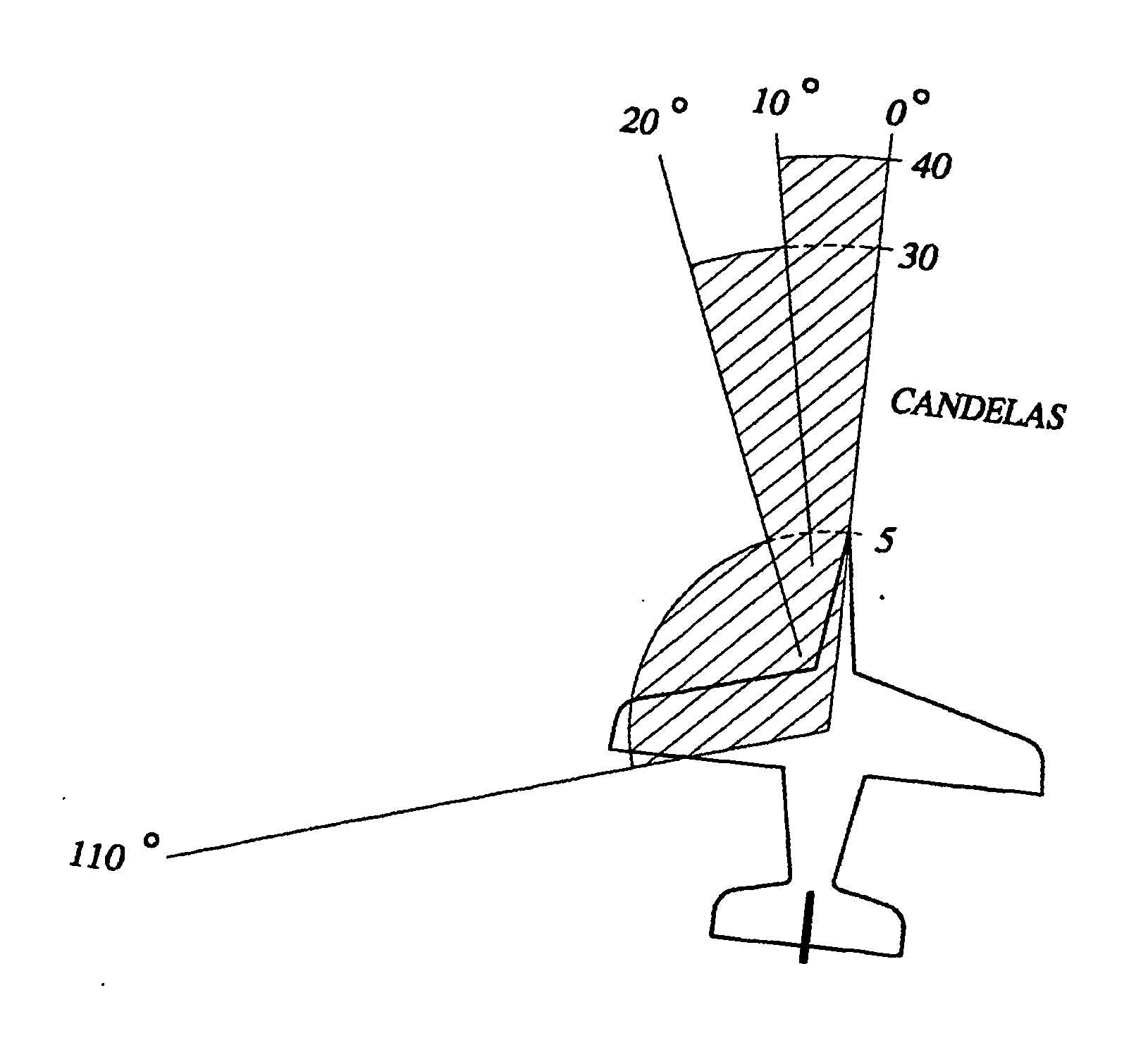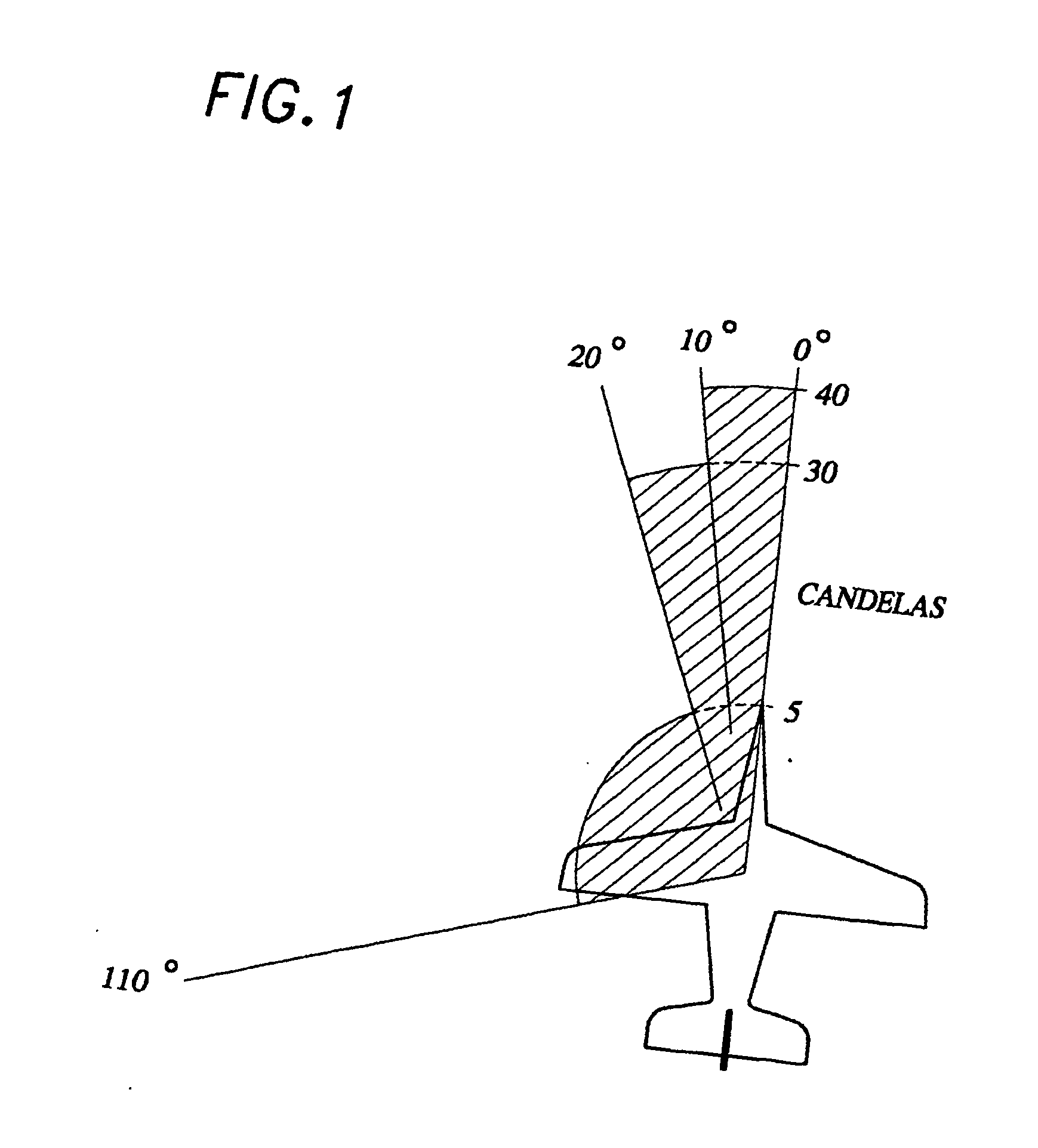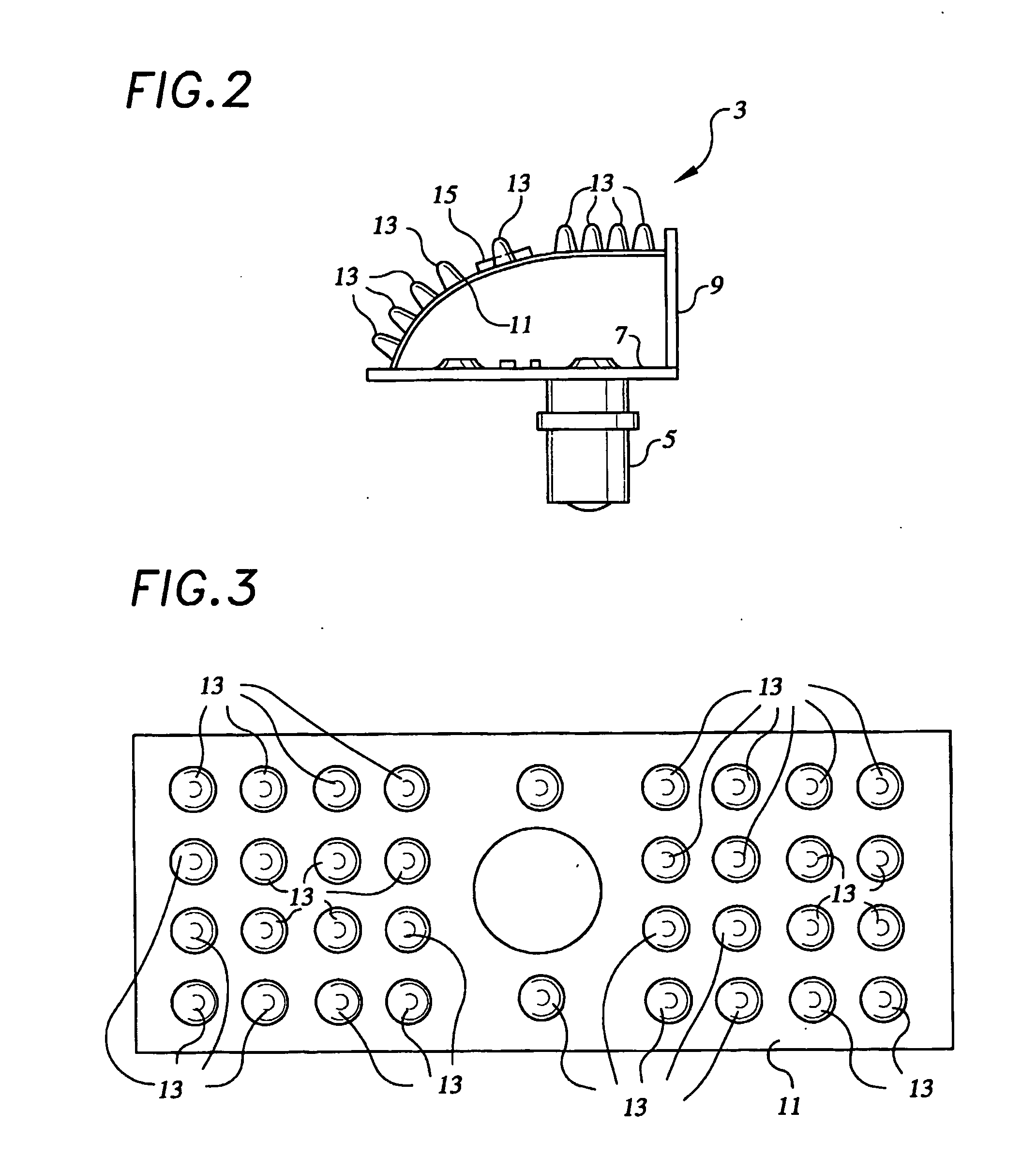Light source assembly for vehicle external lighting
a technology for external lighting and light source parts, which is applied in the direction of landing aids, lighting and heating apparatus, and light support devices, etc., can solve the problems of frequent maintenance, limited and limited service life of incandescent lamps in vehicle exterior lighting applications
- Summary
- Abstract
- Description
- Claims
- Application Information
AI Technical Summary
Benefits of technology
Problems solved by technology
Method used
Image
Examples
Embodiment Construction
[0041] Referring to FIG. 1, all aircraft flying in civilian airspace are required to be equipped with visible navigational lights to allow them to see each other at night or in conditions of bad visibility. The FAA has defined the parameters for acceptable navigational light intensity based on the angle of viewing thereof. A navigational light on top of an aircraft must project at least 40 candelas luminous intensity directly ahead, i.e. zero degrees, and in a 10-degree angular spread to the side of the plane. Between 10 and 20 degrees off the nose of the plane, 30 candelas luminous intensity are required. Between 20 and 110 degrees, an illumination of only 5 candelas is required.
[0042] Military aircraft are also required to have such visible navigation lighting systems for operation in civilian areas in a non-covert, visible mode. Accordingly, even military aircraft are equipped with a number of navigational lights, which have traditionally been a plurality of incandescent bulbs. ...
PUM
 Login to View More
Login to View More Abstract
Description
Claims
Application Information
 Login to View More
Login to View More - R&D
- Intellectual Property
- Life Sciences
- Materials
- Tech Scout
- Unparalleled Data Quality
- Higher Quality Content
- 60% Fewer Hallucinations
Browse by: Latest US Patents, China's latest patents, Technical Efficacy Thesaurus, Application Domain, Technology Topic, Popular Technical Reports.
© 2025 PatSnap. All rights reserved.Legal|Privacy policy|Modern Slavery Act Transparency Statement|Sitemap|About US| Contact US: help@patsnap.com



